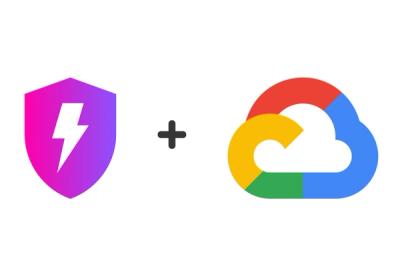
Security News
High Salaries No Longer Enough to Attract Top Cybersecurity Talent
A survey of 500 cybersecurity pros reveals high pay isn't enough—lack of growth and flexibility is driving attrition and risking organizational security.
@ultimate/ngx-fullscreen
Advanced tools
📺 @ultimate/ngx-fullscreen Angular Directive that implements the <a href="https://developer.mozilla.org/en
 Angular Directive that implements the Fullscreen API.
Angular Directive that implements the Fullscreen API.
Install via npm i @ultimate/ngx-fullscreen and register the NgxFullscreenModule into an @NgModule.
Check the StackBlitz demo and the example code.
NgxFullscreenDirective can be used in both template and component (when queried with @ViewChild).
Entire Document: To fullscreen the document just add ngxFullscreen into a component template. Internally this uses the document.documentElement to enter fullscreen:
<!-- Registers the whole Document -->
<div ngxFullscreen></div>
Elements: Create a Template Ref, e.g. #video for the element you wish to fullscreen and pass it into [ngxFullscreen]:
<!-- Registers just this Element -->
<video
src="trailer.mp4"
#video
[ngxFullscreen]="video"
></video>
Export the ngxFullscreen directive to a Template Ref, e.g. #fullscreen and call enter():
<video
src="trailer.mp4"
#video
[ngxFullscreen]="video"
#fullscreen="ngxFullscreen"
></video>
<button (click)="fullscreen.enter()">
Enter Fullscreen
</button>
The enter() method also accepts an optional Element to pass a dynamic element.
Use the exit() method to exit fullscreen mode:
<video
src="trailer.mp4"
#video
[ngxFullscreen]="video"
#fullscreen="ngxFullscreen"
></video>
<button (click)="fullscreen.exit()">
Exit Fullscreen
</button>
Use the toggle() method to toggle fullscreen mode:
<video
src="trailer.mp4"
#video
[ngxFullscreen]="video"
#fullscreen="ngxFullscreen"
></video>
<button (click)="fullscreen.toggle()">
Toggle Fullscreen
</button>
The toggle() method also accepts an optional Element to pass a dynamic element.
Fires entering and exiting fullscreen mode, using the fullscreenchange event behind-the-scenes:
<video
src="trailer.mp4"
#video
[ngxFullscreen]="video"
#fullscreen="ngxFullscreen"
(transition)="onTransition($event)"
></video>
The $event is of type NgxFullscreenTransition, contains the fullscreen status and element that is/was fullscreened.
Check if fullscreen mode is active via fullscreen.isFullscreen. Returns true or false.
<video
src="trailer.mp4"
#video
[ngxFullscreen]="video"
#fullscreen="ngxFullscreen"
></video>
Fullscreen Mode: {{ fullscreen.isFullscreen ? 'Active' : 'Inactive' }}
The fullscreen element will receive an active class is-fullscreen via a @HostBinding.
The NgxFullscreenDirective is exposed when queried with @ViewChild, any public methods and properties are also accessible.
Use a @ViewChild query and call any property as you would inside the template.
import {
NgxFullscreenDirective,
NgxFullscreenTransition
} from '@ultimate/ngx-fullscreen';
@Component({...})
export class AppComponent implements AfterViewInit {
@ViewChild('fullscreen') fullscreen!: NgxFullscreenDirective;
onClick() {
this.fullscreen.toggle();
}
enterFullscreen() {
this.fullscreen.enter();
}
exitFullscreen() {
this.fullscreen.exit();
}
ngAfterViewInit() {
this.fullscreen.transition
.subscribe((change: NgxFullscreenTransition) => {
console.log(change); // { isFullscreen: boolean, element: Element }
});
}
}
Fullscreen errors are caught when entering and exiting and are passed from the directive via an errors event:
@Component({...})
export class AppComponent implements AfterViewInit {
@ViewChild('fullscreen') fullscreen!: NgxFullscreenDirective;
ngAfterViewInit() {
this.fullscreen.errors.subscribe((err: string) => {
// e.g. "Failed to execute 'requestFullscreen' on 'Element'"
console.log(err);
});
}
}
Due to the Permissions API, you cannot invoke Fullscreen mode unless it is from a user action, such as a click event.
This means you cannot load a page and behind the scenes invoke a successful Fullscreen request. This is a common source of errors so keep that in mind.
FAQs
📺 @ultimate/ngx-fullscreen Angular Directive that implements the <a href="https://developer.mozilla.org/en
We found that @ultimate/ngx-fullscreen demonstrated a not healthy version release cadence and project activity because the last version was released a year ago. It has 1 open source maintainer collaborating on the project.
Did you know?

Socket for GitHub automatically highlights issues in each pull request and monitors the health of all your open source dependencies. Discover the contents of your packages and block harmful activity before you install or update your dependencies.

Security News
A survey of 500 cybersecurity pros reveals high pay isn't enough—lack of growth and flexibility is driving attrition and risking organizational security.

Product
Socket, the leader in open source security, is now available on Google Cloud Marketplace for simplified procurement and enhanced protection against supply chain attacks.

Security News
Corepack will be phased out from future Node.js releases following a TSC vote.